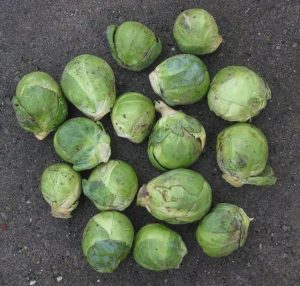Want to add flavor to your food? Make your own condiments!
Have you ever been disappointed by store-bought or poorly made condiments? We’ve all been there. Some condiment brands just aren’t good enough for our sandwiches, hamburgers, and hot dogs. Of course, some people will take this to extremes, like Chicago residents saying that ketchup does not belong on hot dogs under any circumstances. But they do have a point. Sometimes if you want the job done right, you have to do it yourself. You just need some fresh ingredients.
Pesto
Many people dismiss pesto as just another sauce without experiencing its true potential. The pre-made jars found on store shelves often suffer from a lack of freshness, with the basil’s vibrancy drowned out by too much oil or the wrong kind of cheese. In contrast, homemade pesto, bright and aromatic, uses high-quality ingredients that sing in harmony. By blending fresh basil leaves, quality pine nuts, real Parmesan, fresh garlic, and good olive oil, one can achieve a pesto that is both lush and deeply flavorful, turning a simple pasta dish into an exquisite meal.
Combine 2 cups of fresh basil, 1/3 cup of pine nuts, 2 cloves of garlic, 1/2 cup of freshly grated Parmesan, and about 1/2 cup of extra virgin olive oil in a food processor until smooth. Season with salt and freshly ground black pepper to enhance all the vibrant flavors.
Relish
Relish is often relegated to a mere condiment for hot dogs or burgers, with many store-bought versions being overly sweet or unnaturally colored. A homemade relish, however, can be a revelation. By using fresh, crisp vegetables and balancing sweetness with acidity, homemade relish can enhance the flavors of any dish without overpowering it. Whether it’s a tangy cucumber relish or a spicy corn relish, the key lies in the freshness of the ingredients and the precision of seasoning, making it a versatile addition to any culinary repertoire.
One thing I’ve tried is growing my own cucumbers for this recipe. That way, I know they’re as fresh as possible and hasn’t been sitting in a warehouse somewhere after being harvested.
To make it, dice 2 large cucumbers and 1 small onion. Mix with 1/4 cup of apple cider vinegar, 1 tablespoon of sugar, and 2 teaspoons of finely chopped dill. Let it sit for an hour before serving to develop a crisp, balanced flavor.
Hummus
Store-bought hummus often fails to impress, characterized by its blandness and a dense, sometimes gritty texture. Homemade hummus, on the other hand, offers a creamy, rich flavor profile that store varieties rarely match. Starting with quality chickpeas, adding freshly squeezed lemon juice, rich tahini, and just the right amount of garlic and seasoning can elevate this simple dip to a creamy delight. This transformation not only enhances taste but also texture, making homemade hummus a staple for any gathering.
Blend 1 can of drained chickpeas with 1/4 cup of lemon juice, 1/4 cup of tahini, a clove of garlic, and 2 tablespoons of olive oil until creamy. Season with salt and a pinch of cumin for depth. Store in the fridge until ready to use, though I won’t be surprised if you reach for the chips to try a little after making it.
Mayonnaise
Commercial mayonnaise often lacks the subtle nuances of homemade versions. Made in bulk, store-bought mayonnaise can be overly thick and heavy, with artificial preservatives that affect its flavor. By contrast, homemade mayonnaise is light, creamy, and fresh, with a delicate balance of flavors that can be adjusted according to personal preference. Using fresh eggs, quality oil, and a touch of mustard, one can create a condiment that enhances sandwiches and salads without the heaviness of commercial brands.
To make the mayonnaise, whisk 1 egg yolk with 1 teaspoon of mustard and a pinch of salt, then gradually add 1 cup of oil, dripping slowly while whisking, until thick. Finish with a squeeze of lemon for a bright, creamy texture.
Salsa
The difference between store-bought and homemade salsa is often night and day. While jarred salsas can be convenient, they frequently lack the vibrant freshness that makes salsa such a beloved side. Homemade salsa, made with ripe tomatoes, crisp onions, and just the right amount of heat from fresh peppers, captures the essence of each ingredient. The freshness not only contributes to a better texture but also ensures a burst of flavor that complements any dish from breakfast eggs to grilled meats.
Combine 3 ripe diced tomatoes, 1 diced onion, 1 diced jalapeno, a handful of chopped cilantro, and the juice of 1 lime. Salt to taste and let the mixture sit for an hour to let the flavors blend. Of course, you can adjust the amount of each ingredient to your liking. Some people like more cilantro or less onion or even like to put a little diced avocado in it and that’s okay.
Gravy
Many have only ever encountered gravy made from powdered mixes, which can be bland and artificial in taste. Real, homemade gravy made from the pan drippings of roasted meats carries depth and a complexity of flavors that packet gravies can’t replicate. The process of making a roux, slowly incorporating broth, and seasoning it perfectly results in a rich, velvety gravy that becomes the heart of any meal, turning ordinary mashed potatoes or roast dinners into comforting delights.
Make a roux with 2 tablespoons each of butter and flour, then slowly add 1 cup of good quality stock, whisking until thick. Season with freshly ground black pepper and a pinch of your favorite herbs for a full-bodied flavor.
How to make roux? Well, the important part is to have one part fat (usually butter or oil, though some people prefer tallow for gravy) and one part flour. Start by heating the fat over medium heat, and then gradually whisk in the flour. Let it cook, whisking frequently, until it loses the white color and you no longer smell the flour. This can take 20 to 45 minutes depending on how brown you want the roux to be. Be careful not to let it get darker than about the shade that melted milk chocolate would be. This can be used as the base for a lot of different sauces.
Guacamole
Pre-packaged guacamole often suffers from the necessity of preservatives, leading to a loss of the delicate flavors of avocado. Homemade guacamole, made with ripe avocados and seasoned with fresh lime juice, onions, tomatoes, and cilantro, remains unmatched. The freshness of each component is pivotal, as it ensures not only a better texture but also a more engaging taste experience. I’m lucky enough to live in a climate that allows me to have an avocado tree in the back yard. The avocados are growing nicely this year and it’s easy for me to pick a few, ripen them up in a paper bag for a couple of days, and then use them for guacamole.
My favorite recipe for guacamole includes 3 to 5 ripe avocados, cilantro, salt, garlic, and red pepper flakes to taste, lime juice from half a lime, and a couple of diced cherry tomatoes (also from my garden). Mix well and let chill in the fridge for about an hour, and serve with chips or as part of a burrito bar for family dinners.
These examples illustrate how making foods from scratch with quality ingredients can significantly alter one’s culinary experiences, turning previously disliked foods into favorites.








